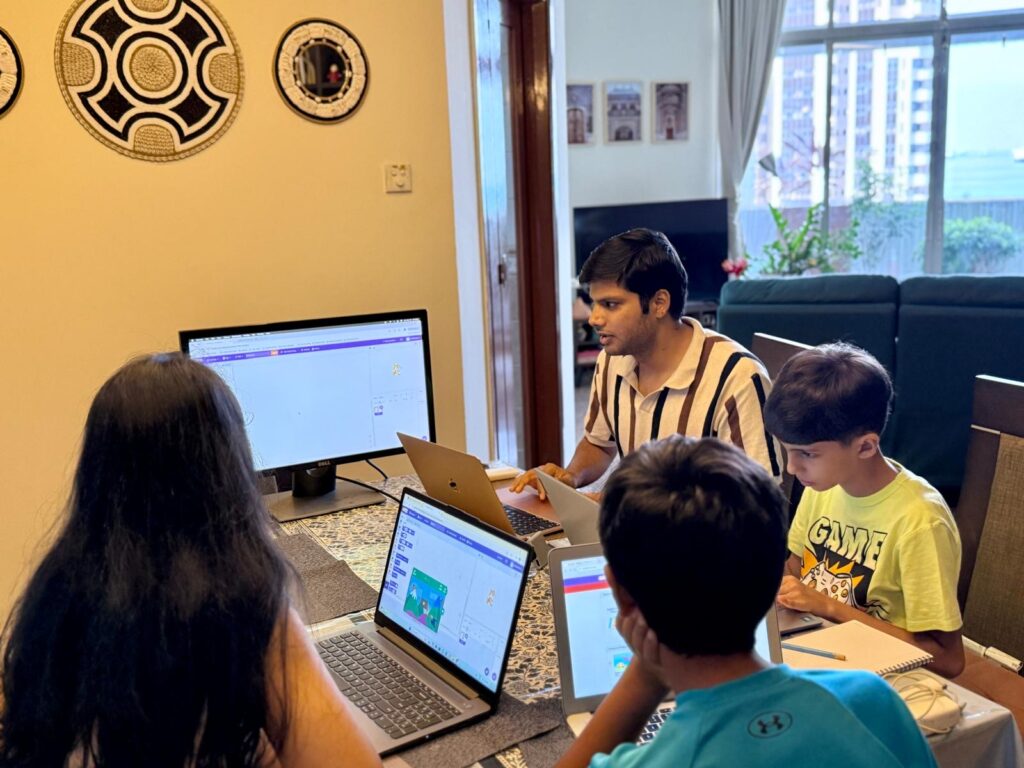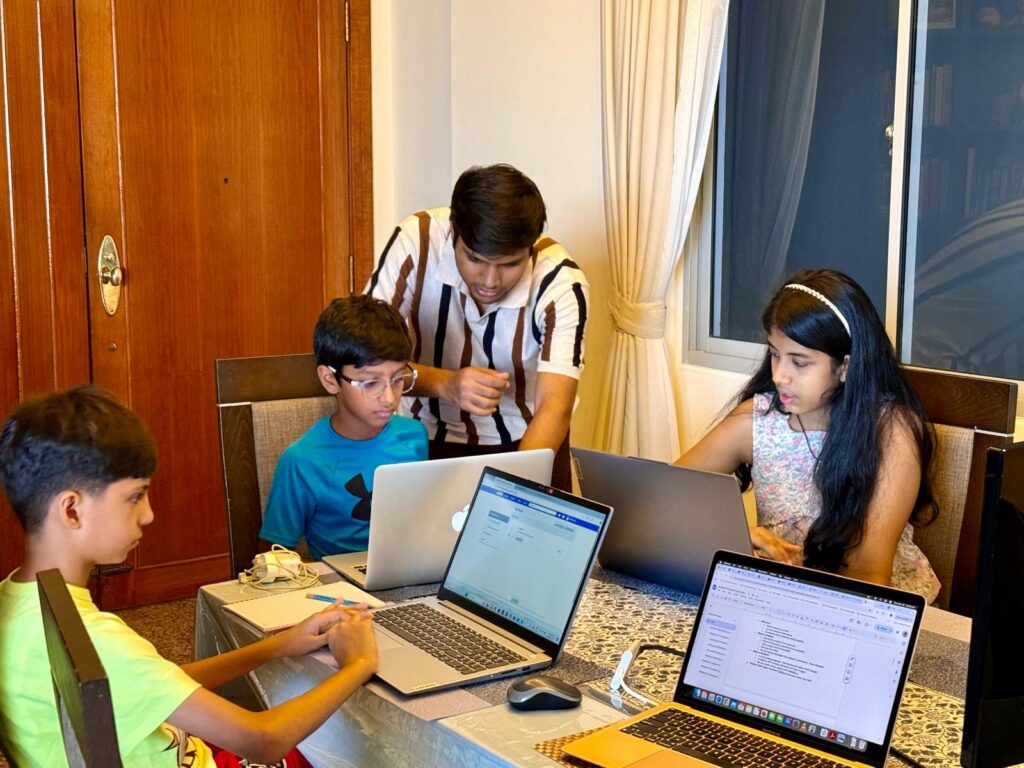Remember when I wrote about my experience teaching Python and Scratch to kids through Code in the Community? Well, the journey didn’t end there. The enthusiasm I witnessed in those 8-10 year olds at Jurong West Public Library stayed with me, and recently, I took the plunge to conduct my own Programming Scratch bootcamp.
Namaste 🙏 and welcome to my blog. I write about product management, data science, and software engineering. For more: About Me | Mentoring | Blog | My Recommendations
Why Scratch? Why Now?
After years of working in product management and data science, I’ve realized that the most complex technical concepts become meaningful only when you can explain them simply. There’s no better test of this than teaching coding to kids. As I mentioned in my Code in the Community post – you’re a true subject matter expert when you can explain a complicated idea to a 10-year-old.
The bootcamp was born from a simple observation: while there are plenty of coding programs available, very few focus on the creative storytelling aspect that makes Scratch so powerful. Kids don’t just want to learn syntax; they want to build games, animate stories, and bring their imagination to life.
Scratch Bootcamp Experience
Unlike my previous experience as a teaching assistant, this time I was designing the entire curriculum from scratch (pun intended!). The challenge was immense – how do you structure learning for kids with varying attention spans and technical backgrounds?
Each kid was incredibly smart, and their pace of picking up concepts kept me on my toes. I always had extra exercises and content ready because what I planned to cover in an hour usually got finished in 40-45 minutes. Then I’d challenge the kids with bonus exercises or variations of the code they had just developed.
After every class, I sent parents a summary of what we covered, along with additional exercises. I also provided personalized feedback on each child’s progress. Parents really appreciated this level of communication and engagement.
In the final session, we had a project showcase where I invited parents to see what their child had developed. It was a super proud moment for all three of us: me, the child, and the parent. For me, it was instant gratification seeing the child build a game or narrate a story through their own creation. The parents were equally proud of what their child had accomplished in just 4 sessions.
The results speak for themselves – check out some of the amazing projects the kids created: a Maze Runner game and an interactive story. Each project showcased not just coding skills, but creativity and problem-solving abilities that went far beyond what I had initially expected.


What Made This Different
The beauty of running my own bootcamp was the flexibility to adapt in real-time. When I noticed kids struggling with coordinate systems, we turned it into a treasure hunt game. When loops seemed abstract, we created dance sequences that repeated patterns. This personalized approach – treating each child as a unique learner with specific needs – made all the difference.
Key Learnings
Teaching kids reinforced something I’ve learned throughout my career: effective communication is everything. Whether you’re explaining a machine learning model to executives in a corporate or helping a 9-year-old understand why their sprite isn’t moving, the principle remains the same – simplicity wins.
The testimonials and photos on the bootcamp portal capture the joy and “aha!” moments better than any metrics could. Seeing kids go from “I don’t know how to code” to “Look what I built!” reminded me why I’m passionate about education and community contribution.
What’s Next?
This bootcamp was just the beginning. In the post-bootcamp survey I ran, I received the most upvotes for future bootcamp topics like Electronics programming (Arduino), Python programming, and web apps. After this successful pilot, I’m excited to plan the next bootcamp with more students in a proper classroom – probably at a community center or public library.
If you’re keen on volunteering – whether through your time commitment to teach or assist, or by contributing to buy Arduino kits for kids – do reach out!
The goal isn’t just to teach coding; it’s to nurture the same curiosity and problem-solving mindset that drives innovation in tech.
As always, feel free to reach out if you want to discuss teaching methodologies, curriculum design, or just share your own experiences with coding education. The community grows stronger when we share our learnings.